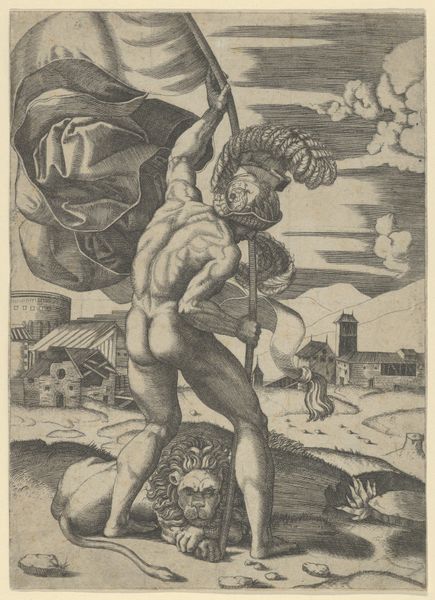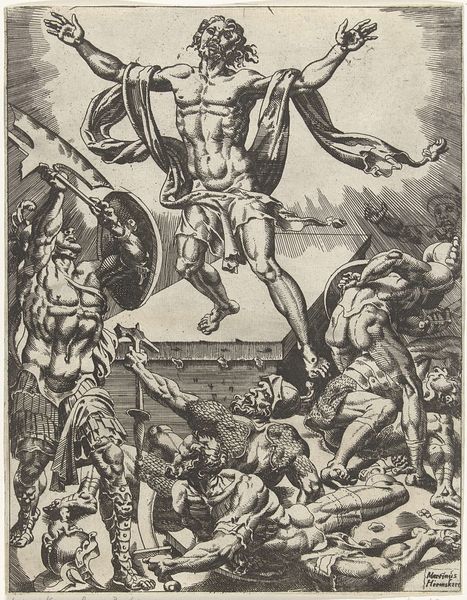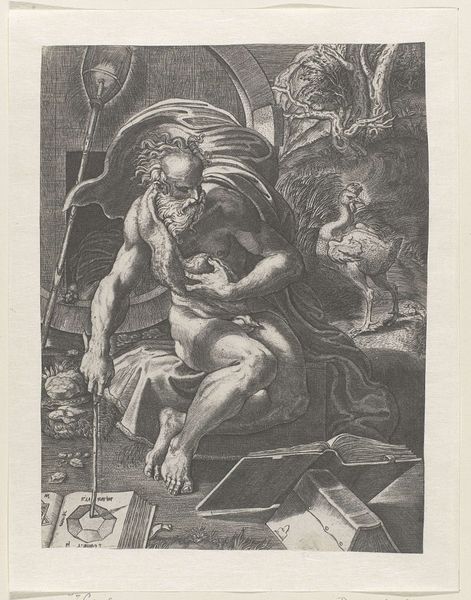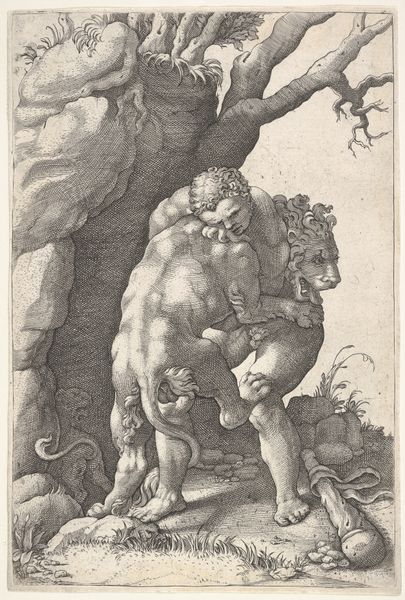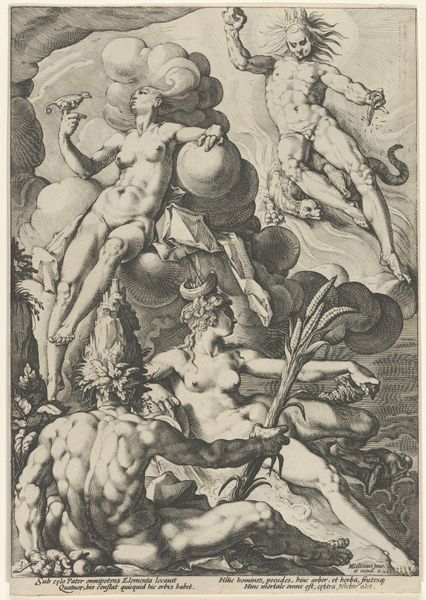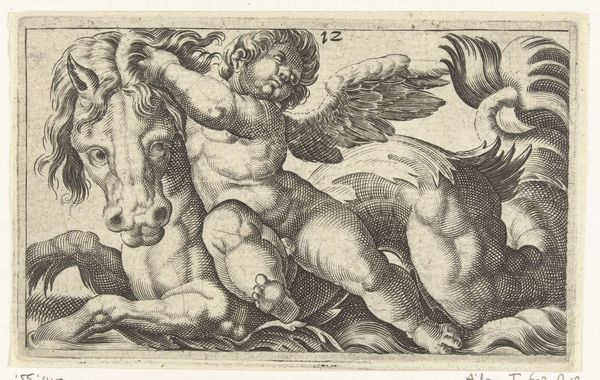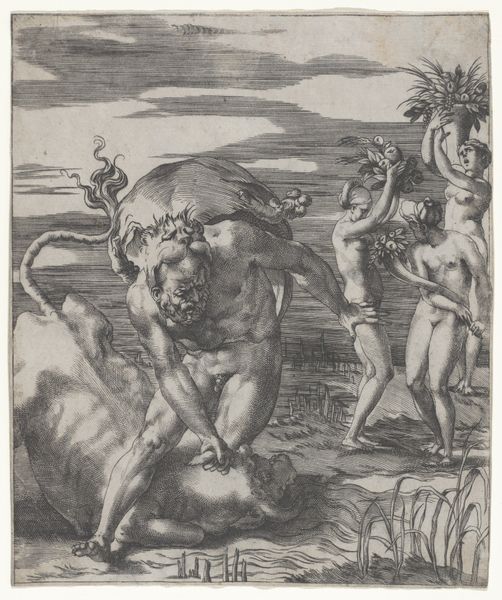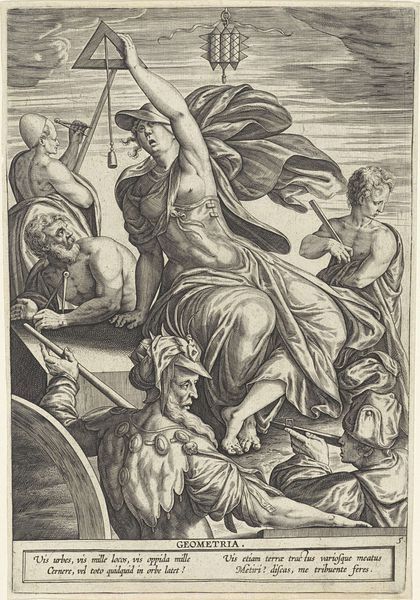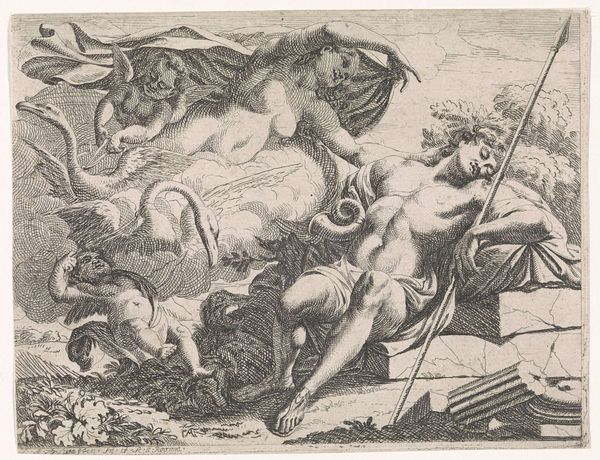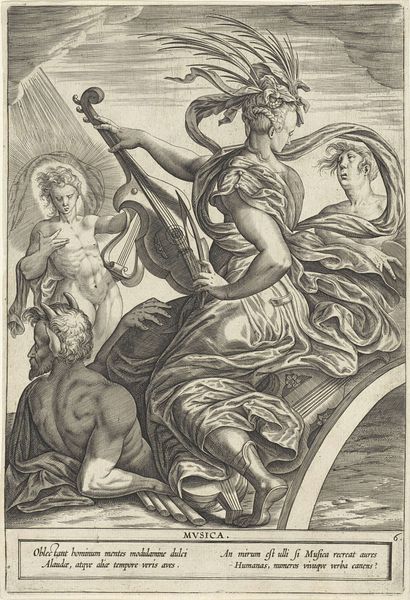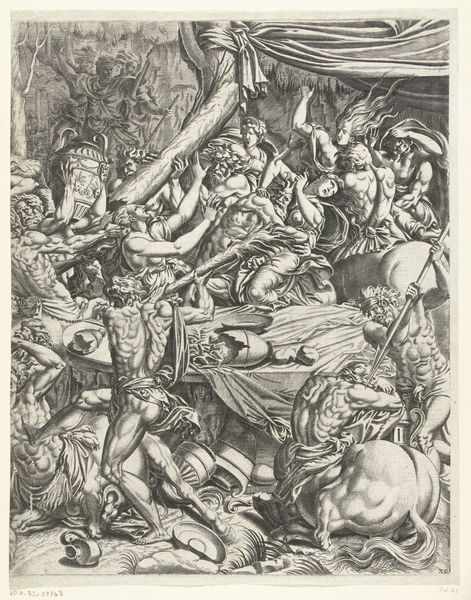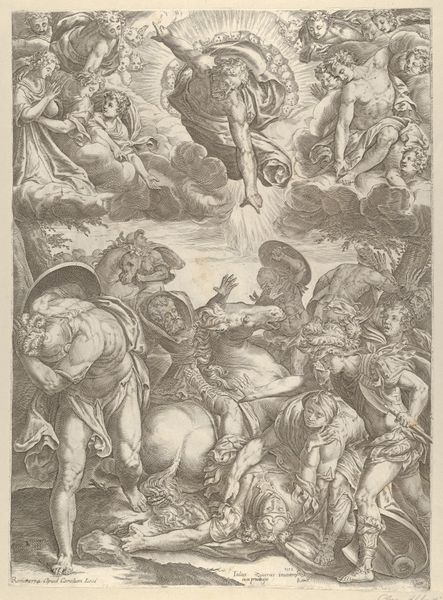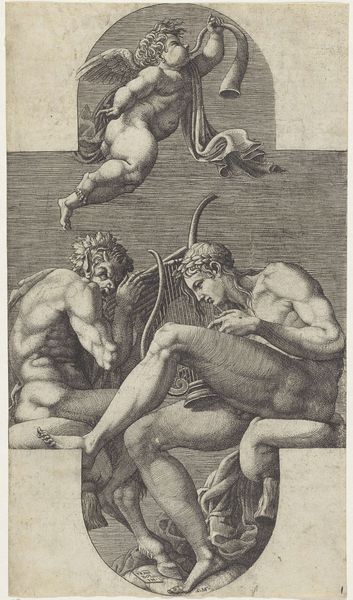
print, engraving
#
narrative-art
# print
#
pen sketch
#
figuration
#
pen-ink sketch
#
line
#
pen work
#
genre-painting
#
northern-renaissance
#
engraving
Dimensions: width 189 mm, height 256 mm
Copyright: Rijks Museum: Open Domain
Curator: It has a certain stark, dreamlike quality, doesn't it? The high contrast of the engraving... Almost nightmarish, a touch macabre even. Editor: Indeed. What we’re looking at here is an engraving, “Dood van de godsman door een leeuw” which translates to "Death of the man of God by a Lion." Created sometime between 1548 and 1554 by Dirck Volckertsz Coornhert, it's currently housed at the Rijksmuseum. It depicts a scene of…well, pretty much what the title suggests. Curator: Pretty literal! So, immediately I'm drawn to this frenzied energy. The twisting figure of the man, the rearing donkey, even the lion seems almost…caught in mid-roar? It's chaos. What story is Coornhert trying to tell? Editor: The image illustrates a cautionary tale from the Old Testament, specifically 1 Kings 13. It depicts a prophet who disobeyed God’s command not to eat or drink in a certain place. As punishment, he was killed by a lion. A visual sermon, if you will, on obedience and the consequences of defiance. Curator: Ah, right. That’s why there’s a narrative element. Obedience at all costs, even death…grim stuff. But, visually, it is quite striking, all those lines creating form and movement. I appreciate the detail Coornhert manages despite the…gruesome subject. He really captured the ferocity of the lion and the sheer panic of the poor bloke being mauled. Editor: The work certainly participates in broader discourses around religious authority and individual choice at a pivotal moment in European history—the Northern Renaissance, a time rife with social and religious upheaval. The starkness reflects a certain didactic Protestant aesthetic. Curator: The Northern Renaissance’s infatuation with morality… It’s amazing how such dramatic subject matter translates across centuries. The human dilemma remains, I guess. Do we do what's expected, or do we dare to stray? Editor: Precisely. And how societies choose to punish those who do stray. Curator: Always relevant, sadly. Still, despite the unsettling subject, it's strangely beautiful, this delicate dance with death on display. Editor: I agree. Its potency, even after all this time, invites contemplation on obedience, punishment, and the narratives that continue to shape us.
Comments
No comments
Be the first to comment and join the conversation on the ultimate creative platform.
